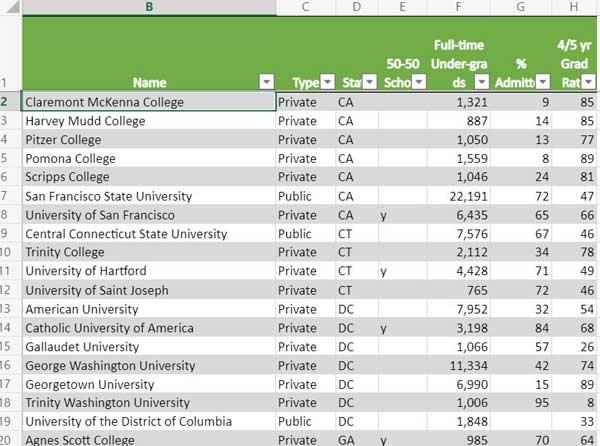 College consortiums offers students the opportunity to take classes at participating colleges through a cross registration system. Students don’t have to go through the admissions and enrollment process at the other college. Through various options, they are allowed to register for a course at an institution on the consortium lists while only paying tuition at their home school. These programs can dramatically expand the courses available to students as well as networking opportunities.
College consortiums offers students the opportunity to take classes at participating colleges through a cross registration system. Students don’t have to go through the admissions and enrollment process at the other college. Through various options, they are allowed to register for a course at an institution on the consortium lists while only paying tuition at their home school. These programs can dramatically expand the courses available to students as well as networking opportunities.
Some of the more well-known consortiums include The Five College Consortium of Amherst, Amherst College, Hampshire College, Mount Holyoke, Smith, and the University of Massachusetts Amherst. The Claremont Colleges consist of Pomona, Claremont-McKenna, Scripps, Harvey Mudd, and Pitzer. The Quaker Consortium members are University of Pennsylvania, Bryn Mawr, Haverfo
Get Your Free List of Colleges
Most Likely to Meet Financial Need
Consortium Cross Registration Limitations
In such consortiums, each school maintains separate admissions, tuition, and graduation requirements. Students are usually limited to the number of classes they may take at member institutions. It may be only one per semester, a certain total number, or dependent on the number of students participating in any one semester.
Some consortiums are well-developed and provide extensive support to make it easy for students to cross register at campuses. They’ll provide a common course search system that will list all eligible courses on the campuses. The Five Colleges and Worcester Consortium also have established bus systems to allow students to move from campus to campus.
Other consortiums do little more than provide a form for the student to complete to cross register at a member institution. The program is often not publicized and it’s the student’s responsibility to locate eligible classes, ensure that it will be accepted as part of her degree plan, and arrange for transportation between campuses.
Cross-Registration Agreements
Then there are schools with extensive cross-registration agreements that aren’t part of a specific consortium. Mills College has agreements with 14 schools including the University of California at Berkeley. UC Berkeley lists cross-registration agreements with just 10 institutions which includes the University of New Orleans. Only five institutions are on both schools’ cross-registration college lists.
I’ve identified 101 50-50 schools that participate in consortiums. The total number of colleges in the consortiums is at least 196. I didn’t include colleges that had less than 500 full-time undergraduates or were predominantly 2-year institutions or graduate institutions.
The following college list includes all colleges I’ve found. I’ve noted their 50-50 status. 50-50 colleges are schools that accept at least 50% of students and have at least a 50% graduation rate. You can get a complete list of 50-50 schools here. I’ve also includes their size, percentage admitted, and graduation rate. As usual, the 4-year graduation is used with private institutions and the 5-year rate for public schools.
College Consortium List



